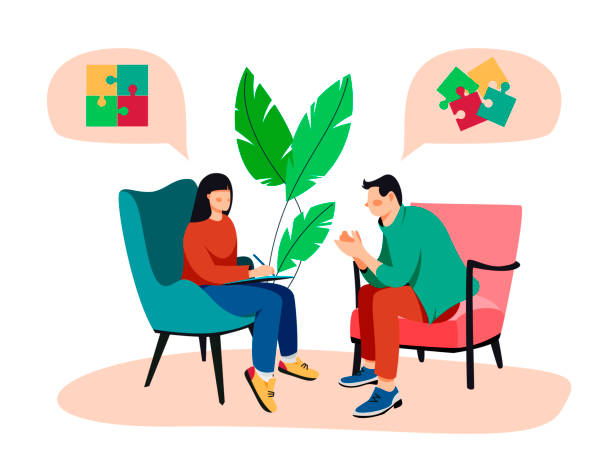Microsoft Job requirement: "Ability to handle ambiguity and collaborate across multiple groups and disciplines"
Job Interview Tips

"Ability to handle ambiguity and collaborate across multiple groups and disciplines"
Startups or large corporates, It is common for software professionals to work on projects that span multiple departments or organizations and collaborate with people from diverse backgrounds, such as product managers, designers, testers, and operations staff.
Effective stakeholder management can boost not only the success of your current project but also your entire career.
Ambiguity and Collaboration
![]()
First, let's define ambiguity and collaboration. Ambiguity refers to the lack of clarity or uncertainty about a situation or problem.
It can arise in various forms, such as incomplete or conflicting information, unclear goals or expectations, and multiple stakeholders with different perspectives and priorities.
Collaboration, on the other hand, refers to the act of working with others toward a common goal.
It involves effective communication, teamwork, and the ability to integrate different perspectives and expertise.
As a software professional, it is crucial to have the ability to adapt to and work with unfamiliar or untested technologies and methodologies.
This skill is key to the success of any project.
So, how can software professionals develop the ability to handle ambiguity and collaborate effectively across multiple groups and disciplines?
Here are some tips:
Communicate openly and transparently

Effective communication is the foundation of collaboration.
When working with ambiguous situations or diverse stakeholders, it is important to communicate openly and transparently to ensure that everyone is on the same page.
This includes clarifying goals and expectations, sharing progress and challenges, and asking for help when needed.
Imagine you are a project manager working on a new software development project with a team of developers and designers.
The project involves implementing a new feature that has never been attempted before, and there is a lot of uncertainty about how it will turn out.
To ensure the success of the project, you decide to adopt an open and transparent communication style with your team.
You make a point to regularly check in with team members, clarify goals and expectations, and share any updates or challenges that arise.
You also encourage team members to speak up if they have any concerns or ideas, and you make it clear that it is okay to ask for help when needed.
As a result of this open and transparent communication, the team is able to work efficiently and effectively, despite the inherent ambiguity of the project.
They are able to navigate the unknowns and come up with creative solutions, ultimately delivering a successful project.
Embrace the unknown and embrace change

Handling ambiguity and adapting to change can be challenging, but it is an essential part of the software development process.
Instead of avoiding or resisting ambiguity, try to embrace it as an opportunity to learn and grow.
This may involve seeking out new experiences, being open to different perspectives, and being willing to try new approaches.
Imagine you are a software developer working on a team that is tasked with building a new application from scratch.
The team has a clear set of requirements and a rough plan, but there are many unknowns and uncertainties that need to be addressed along the way.
As you work on the project, you realize that some of the initial assumptions you made about the project are not holding up.
You also discover that some of the new technologies you are using are more challenging to work with than you anticipated.
Instead of getting discouraged or resisting the changes that are necessary to move the project forward, you embrace the unknown and see it as an opportunity to learn and grow.
You seek out new resources and perspectives to help you better understand the technologies you are using, and you are open to trying new approaches when the original ones don't work.
As a result of your willingness to embrace ambiguity and change, you are able to overcome the challenges and deliver a successful project.
You also gain valuable skills and experience that you can apply to future projects.
Develop problem-solving skills

When faced with ambiguity, it is important to have strong problem-solving skills to identify the root causes of the ambiguity and come up with effective solutions.
This may involve breaking down complex problems into smaller parts, brainstorming with others, and seeking out new information or resources.
Imagine you are a software engineer working on a team that is developing a new mobile application.
The team has been tasked with adding a new feature to the app that involves integrating with a third-party service.
As you begin working on the feature, you realize that there are many unknowns and uncertainties that need to be addressed.
The documentation for the third-party service is incomplete and there are no examples of how to integrate with it.
To tackle this ambiguity, you decide to use your problem-solving skills to break down the challenge into smaller parts.
You start by identifying the specific problems you need to solve, and then you brainstorm with your team to come up with possible solutions.
You also seek out additional resources and information, such as reaching out to the vendor for clarification or looking for examples of similar integrations online.
Through this process, you are able to identify the root causes of the ambiguity and come up with effective solutions.
You successfully integrate the third-party service into the app, and the new feature is a success.
Practice empathy and active listening

Practice empathy and active listening: Collaboration involves listening to and understanding the perspectives and needs of others.
Developing empathy and active listening skills can help you build trust and respect with your colleagues and facilitate effective collaboration.
This may involve paying attention to nonverbal cues, asking clarifying questions, and seeking to understand others' viewpoints.
Imagine you are a software project manager working on a new product with a cross-functional team.
The team consists of developers, designers, and product managers, each with their own perspectives and needs.
As you work on the project, you realize that there are many conflicting ideas and priorities.
To facilitate effective collaboration, you decide to focus on developing your empathy and active listening skills.
During team meetings, you make a point to pay attention to nonverbal cues and ask clarifying questions to ensure you understand others' viewpoints.
You also make an effort to understand the motivations and concerns of each team member, and you seek to find common ground and compromise when necessary.
Through this process, you are able to build trust and respect with your colleagues and facilitate a more productive and harmonious collaboration process.
The team is able to work effectively together and deliver a successful product.
Seek feedback and continuous learning

Feedback is an essential part of the learning process, and it can help you identify areas for improvement and growth.
Seek out feedback from your colleagues and superiors, and be open to constructive criticism.
Also, be proactive in seeking out learning opportunities and staying up to date with new technologies and approaches.
Imagine you are a software developer working on a new project that involves using a technology you are not familiar with.
The project is ambitious and there are many unknowns that need to be addressed along the way.
To ensure the success of the project, you decide to seek out feedback and learning opportunities at every step of the process.
You ask your colleagues and superiors for feedback on your work, and you are open to constructive criticism.
You also proactively seek out learning opportunities, such as attending workshops or online courses on the technology you are using.
Through this process, you are able to identify areas for improvement and grow your skillset.
You also stay up to date with the latest technologies and approaches, which helps you navigate the ambiguity of the project more effectively.
As a result, you are able to deliver a successful project and enhance your professional development.
In conclusion, the ability to handle ambiguity and collaborate across multiple groups and disciplines is an essential skill for success in today's workplace.
It is important to embrace ambiguity and change, develop strong problem-solving skills, practice empathy, and active listening, and seek feedback and continuous learning.
By developing these skills, you can effectively navigate ambiguous situations and facilitate productive collaboration with diverse stakeholders.
Whether you are a software professional or working in a different field, these skills can help you thrive in today's dynamic and fast-paced world.
If you liked my content, do kindly like and share it with other students in your network. And don't forget to subscribe to the newsletter to NEVER miss an article. I also tweet here.
